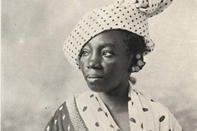
At around 4 C.E., the Bantu people began to settle in Zanzibar. Arab and Persian emigrants began to settle in Zanzibar around 7 C.E. after fleeing their war torn countries. The traders used the islands as bases during their trade voyages between Arabia, India and Africa. Through intermarriages, the Kiswahili language was born which formed the base of present day Swahili. Trade routes were established in the home countries of the Persian and Arab emigrants who continued to intermarry.
The trade goods included gold, ivory, ebony, tortoise shells and slaves. In return, they received cloth, beads and porcelain. This was a prosperous time for Zanzibar which continued until the late 15th century with the arrival of Vasco Da Gama in 1498.This marked the beginning 2 centuries of Portuguese rule over East Africa and Zanzibar. The many Christian missionaries such as Dominicans, Augustines and Jesuits began to build churches and mission outpost in order to try and convert the population to Roman Catholicism. However, their attempt failed.
The Portuguese failed to send enough men to protect their territories and eventually had to surrender. The Omanis took over rule of Zanzibar in 1698. The local African chiefs protested, but the Omanis continued to rule until the revolution in 1964.Many sultans of the Busaidi family ruled during this time.
To this day, the name Busaidi is still quite common in Zanzibar. The most famous Sultan was Seyyid Said bin Sultan, or Said the Great. He created a rich empire for himself by introducing cloves to the island. This is where the title, 'Spice Islands', come from. The island already had a lucrative slave trade.
Seyyid Said bin Sultan moved the Sultanate's capital from Muscat to Zanzibar in the 1840's. The area controlled by the Sultan of Zanzibar was known as Zanj. This area included Dar es Salaam and Mombasa with trading routes stretching inland, such as Kindo situated on the Congo River. The slave trade in Zanzibar was a very lucrative business and made many traders, such as Tipu Tip, rich.
After Said the Great's death in 1856, there was a power struggle and faced with the abolishment of slavery and jealousy within the family, the British managed to gain control of much of the island
The British managed to pressure Said's successors to stop the slave trade, but many of the treaties were ignored. Sultan Ali, one of Sultan Said's successors, honoured the treaty in 1890 declaring all the slaves free and freeing any slaved that entered the area.
When Sultan Hamed bin Thuwain died in 1896, he left the throne vacant. His cousin, Khaled, saw this as an opportunity and with some supporters, proclaimed himself the new Sultan. The British did not support him and ordered Khaled to lower his flag by 9am on 27 August, 1896.
Khaled refused and the British opened fire on Stone Town, destroying the palace, harem, Sultan's ship and lighthouse. The war was over 40 minutes later and Seyyid Hamoud bin Mohammed was declared the new Sultan. This was the shortest war in history.
Zanzibar remained a British protectorate until independence in 1963. Zanzibar was granted constitutional independence on 10 December, 1963. John Okello, a Ugandan President on Pemba, began one of the bloodiest revolutions ever seen on Zanzibar on 12 January, 1964.
Okello gained support amongst the black population and captured strategic buildings such as the police and government buildings. He based himself in the radio station building, broadcasting his message to his revolutionaries.
Within only a few days, about 17 000 Arabs and Indians were killed while many others fled as their land were confiscated and nationalised. Abied Karume, the leader of the Afro-Shirazi party, was declared the new president and continued to form the Revolutionary Government of Zanzibar.
Zanzibar joined Tanganyika (Tanzania) on 24 April 1964 under President Julius Nyerere. Zanzibar was granted a constitutional right to have its own president, cabinet, first minister and House of Representatives.
Zanzibar suffered after the revolution. Karume established relations with socialist countries such as USSR, Cuba and China, through which he was able to establish roads, airports and infrastructure which Zanzibar needed.
Zanzibar was only opened to the free market in the late 1980's. The residents and Tanzania began to take advantage of its tourist potential. Zanzibar is led today by Amani Karume, the son of Abied Karume.
Read more about Zanzibar Accommodation Options

 Stay at Zanzibar Resorts and Hotels. Zanzibar - A visit to Zanzibar is a dream come true! Hotel and beach resort accommodation options are l...
Stay at Zanzibar Resorts and Hotels. Zanzibar - A visit to Zanzibar is a dream come true! Hotel and beach resort accommodation options are l... Read on for your detailed Zanzibar travel guide. Useful information on the people of Zanzibar, history, foods and helpful travel tips for tr...
Read on for your detailed Zanzibar travel guide. Useful information on the people of Zanzibar, history, foods and helpful travel tips for tr...